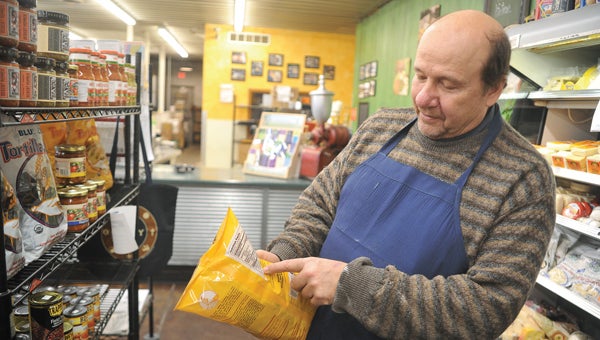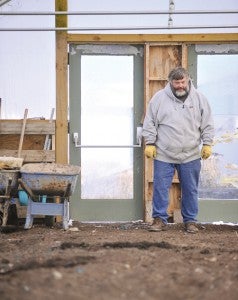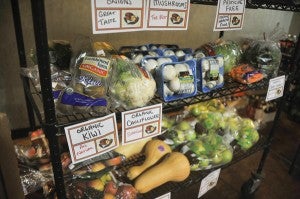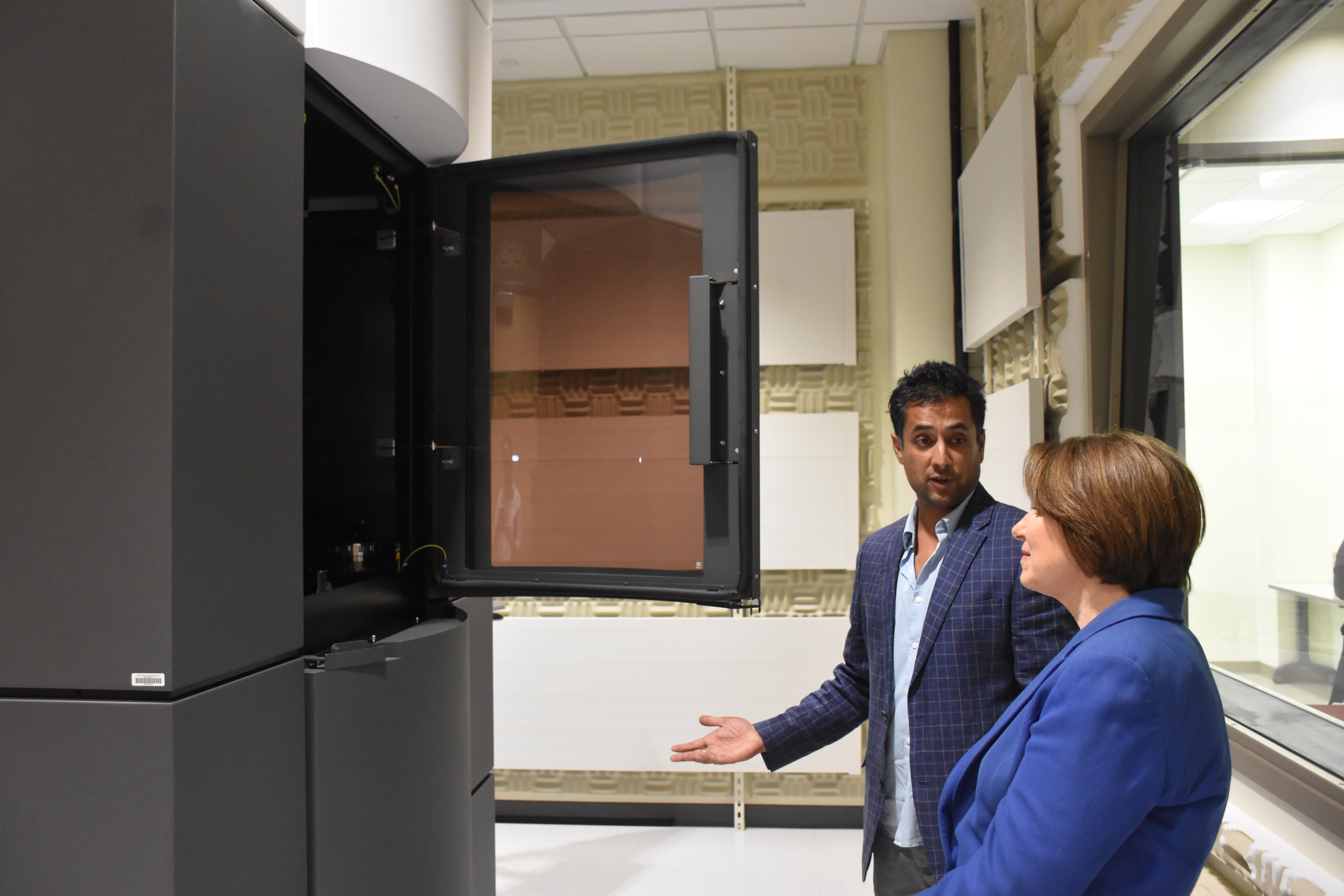Grassroots thinking
Published 10:56 am Wednesday, March 14, 2012

Jim Styles, owner of Jim's Superfresh in Austin, shows off a bag of organic tortilla chips made in Welcome, Minn. Many of the products Style's carries are organic and produced locally, or elsewhere in the state of Minnesota. — Eric Johnson/photodesk@austindailyherald.com
Food providers are keeping a local mindset
This story originally appeared in Progress 2012. Get a copy at the Austin Daily Herald.
A small, country-style grocery store on the edge of Austin offers just a glimpse into the world of organic and locally grown foods.
That world is small, but it’s picking up some followers — slowly.

Wayde Groh looks over his greenhouse, which he uses to grow his own vegetables to sell at the local farmers’ market.
While customers wait in lines at franchises and corporate stores, Jim Stiles, owner of Jim’s Super Fresh in Austin, is holding the door for one of his customers. Interaction with the customers, he said, is still important.
For more than 30 years, Stiles has maintained the “ma and pa” image at his store. Old-fashioned candies line the shelves of a wall, while pre-packaged items sport brand names few people would likely recognize.
Those images throughout the store are more byproducts of Stiles’ business model than thoughtfully placed timepieces. They stem from a vision that few locals have, but that may slowly return to small towns: buying and selling local, naturally raised or grown foods.
Persuading more people to do that is the trick, though.
“That’s the million-dollar question there,” Stiles said about creating a larger community of local buyers and traders.

A majority of the produce at Jim's Superfresh in Austin is all natural, coming from organic producers, many of them local.
Not long ago, Stiles started carrying more organic produce, naturally raised meat and poultry. He and others have noticed a few more people, like some at the farmers markets, who focus on naturally raised, local food. In the Austin and Albert Lea area, however, the movement is slower than elsewhere.
Organic produce is slow to move off the shelves at Stiles’ store.
“The meats have done a lot better than fruits and vegetables,” he said. “Maybe that’s because we live in a meat and potato town, I guess.”
Organic — or naturally raised foods — are expensive, but Stiles and others who follow the vision say the costs are worth it because they support the local economy, along with the trend of living a healthier lifestyle.
“It just keeps those dollars local, and that’s good for a small business like me that really relies on people that want to buy local and support local,” Stiles said. “If people don’t have that in their way of thought, I’m gone, basically. I’d rather have a hundred small businesses than one big business.”
Across town, near the hub of Austin, a moderate-sized greenhouse stands among the grocery and convenience stores. Its owner, Wayde Groh, shares similar views with Stiles.
“One of the reasons I chose that site is it’s in the center of town,” Groh said about building his greenhouse. “I wanted it to be a model for locally grown food, right here in the heart of the city.”

A sign urging people to go green greets visitors coming and going between Jim's Superfresh and the greenhouse.
Groh admits he can only grow a limited amount of produce. Though he has the 72- by 30-foot greenhouse and several other gardens, he wants to grow more vegetables. He doesn’t use any herbicides or pesticides on his plants. Like many, he thinks too many chemicals are going into America’s produce. So he offers consumers a way around that issue.
Groh, like Jody Maloney of Lyle, takes his goods to the Austin Farmers’ Market. There, he and Maloney not only trade goods, they cooperate with other vendors, learn from them, help them.
“We should all be helping each other, so we can better everything,” Maloney said.
Groh agrees.
“It’s a lot of work, but I learn a tremendous amount just from customers and other vendors,” he said. “That’s the rewarding part about the farmers’ market.”
But Austin’s farmers’ market is small. Maloney, Groh and Stiles all realize the locally grown, naturally raised movement is a slow process. As a grocery store owner, Stiles sees it every day. The sheer bulk, low price and convenience of today’s common items steer most people away from organic and local goods.
Naturally grown foods require more effort all around — growing them and marketing them. But the approach is straightforward, or as Stiles calls it, “grassroots.”
“You’ve got to look the consumer in the eye and say, ‘These are the best green beans I’ve ever tasted in my life,’” he said. “It just takes that grassroots thinking, that grassroots level where it is one-on-one, telling them your story.”
However, people like Groh and Maloney have hidden stories. They want to foster local trade, but they aren’t certified organic farmers. For that reason, they can’t sell to stores like Jim’s Super Fresh. They are limited to farmers’ markets and word of mouth.
Along with Stiles, they wish the market scene would be more like it was decades ago, when people bought and sold locally. It may take a complete reawakening for people to do that, however.
The few people at the farmers’ markets or in Stiles’ store may consciously buy locally. Perhaps not. Changing their minds, however, is just a conversation’s distance away, the length an arm can reach to give someone a tomato and convince them to try it.


